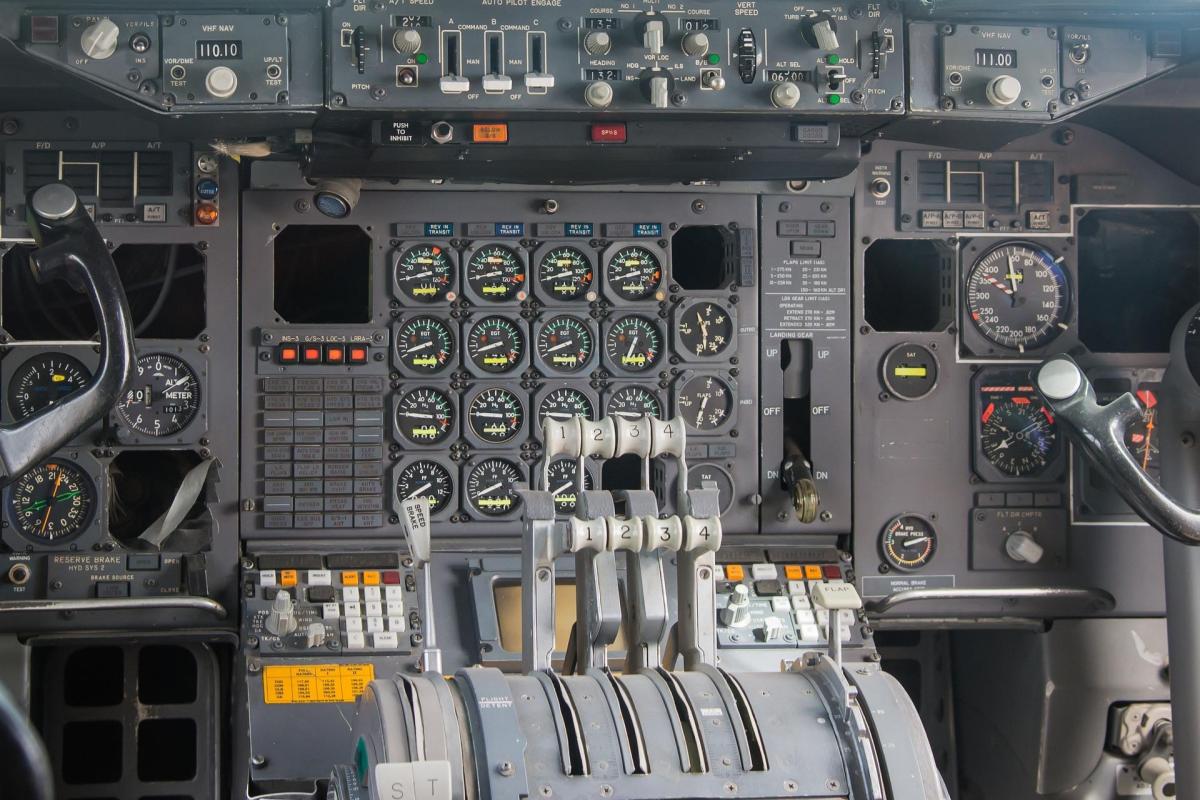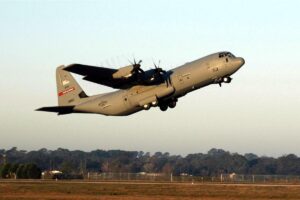Optimizing Avionics Communication with ARINC-575/825
Meta Description
Enhance avionics communication using ARINC-575 and ARINC-825 (Aero CAN) protocols. Explore their applications in aircraft systems, data buses, and network connectivity. Discover how they improve reliability, data integrity, and performance in avionics applications.
Table of Contents
- Introduction
- Overview of ARINC Standards
- Importance of Effective Communication in Avionics
- Understanding ARINC-575 and ARINC-825
- Definitions and Purpose
- Key Features and Specifications
- Applications in Avionics Systems
- ARINC-575 Applications
- ARINC-825 Applications
- Integration into Data Buses
- Benefits of ARINC-575 and ARINC-825 in Avionics
- Enhanced Reliability
- Improved Data Integrity
- Performance Optimization
- Challenges and Solutions in Implementation
- Integration Challenges
- Technical Limitations
- Best Practices for Overcoming Obstacles
- Case Studies
- Real-World Implementations of ARINC-575
- Real-World Implementations of ARINC-825
- Future Trends in Avionics Communication
- Emerging Technologies
- The Role of ARINC Standards in Future Developments
- Conclusion
- Summary of Key Points
- Recommendations for Avionics Professionals
1. Introduction
Overview of ARINC Standards
Aerospace Radio Inc. (ARINC) has played a crucial role in establishing communication standards that facilitate effective data exchange in the aviation industry. Two of the most significant protocols in this context are ARINC-575 and ARINC-825 (Aero CAN). These protocols have been developed to ensure that avionics systems can communicate seamlessly and reliably, thereby enhancing overall aircraft performance and safety.
Importance of Effective Communication in Avionics
In the highly complex and dynamic environment of aviation, effective communication between avionics systems is paramount. The ability to transmit data accurately and in real-time is critical for navigation, control, and monitoring functions. The implementation of ARINC-575 and ARINC-825 addresses these needs by providing robust communication frameworks that ensure reliability, integrity, and performance.
2. Understanding ARINC-575 and ARINC-825
Definitions and Purpose
ARINC-575 is a data communication protocol specifically designed for point-to-point communication within aircraft systems. Its primary goal is to standardize data exchange among various avionics components, ensuring that critical information flows smoothly and accurately.
ARINC-825 (Aero CAN) is an adaptation of the Controller Area Network (CAN) protocol tailored for aerospace applications. It is designed to support multi-node communication, making it suitable for modern avionics systems that require simultaneous data exchange among multiple devices.
Key Features and Specifications
ARINC-575:
- Data Transmission Rates: Supports rates from 50 to 400 kbps.
- Message Structure: Provides a clear and consistent message format, including address, control, and data fields.
- Compatibility: Designed to work with a variety of avionics systems, enhancing its applicability across different platforms.
ARINC-825:
- Data Transmission Rates: Supports up to 1 Mbps, allowing for rapid data exchange.
- Network Topology: Utilizes a bus topology, enabling multiple nodes to share data efficiently.
- Error Handling: Features advanced error detection and correction mechanisms to maintain data integrity.
3. Applications in Avionics Systems
ARINC-575 Applications
ARINC-575 is widely used in various avionics applications, including:
- Flight Management Systems (FMS): Facilitates communication between navigation and autopilot systems, ensuring accurate flight paths and navigation.
- Engine Control Systems: Supports data exchange for engine performance monitoring and management, improving fuel efficiency and safety.
- Health Monitoring Systems: Enables reliable data transfer for monitoring the health of critical aircraft systems.
ARINC-825 Applications
ARINC-825 is utilized in modern avionics systems for:
- Sensor Networks: Allows real-time data exchange among multiple sensors, enhancing situational awareness and safety.
- Distributed Avionics Systems: Facilitates communication between various avionics components, improving overall system integration and performance.
- Maintenance and Diagnostics: Supports efficient data transfer for monitoring aircraft health, enabling proactive maintenance and reducing downtime.
Integration into Data Buses
Both ARINC-575 and ARINC-825 can be integrated into avionics data buses, allowing for streamlined communication between various systems. The integration of these protocols into data buses simplifies wiring, reduces weight, and improves overall system reliability.
4. Benefits of ARINC-575 and ARINC-825 in Avionics
Enhanced Reliability
One of the primary benefits of implementing ARINC-575 and ARINC-825 in avionics systems is the enhanced reliability of data communication. Both protocols are designed to minimize data loss and ensure that critical information is transmitted accurately, which is essential for safety-critical applications.
Improved Data Integrity
ARINC-825’s robust error detection and correction capabilities ensure that data integrity is maintained during transmission. This is particularly important in avionics, where data corruption can lead to severe consequences. ARINC-575 also incorporates error-checking mechanisms, contributing to the overall integrity of the communication.
Performance Optimization
The implementation of these protocols can lead to significant performance improvements in avionics systems. By facilitating faster data transfer and enhancing communication efficiency, ARINC-575 and ARINC-825 contribute to better system responsiveness and overall operational effectiveness.
5. Challenges and Solutions in Implementation
Integration Challenges
Integrating ARINC-575 and ARINC-825 into existing avionics systems can present several challenges, including compatibility issues with legacy systems and the need for significant modifications to current infrastructure.
Technical Limitations
Technical limitations, such as bandwidth constraints and latency issues, can also pose challenges during implementation. Ensuring that all components can operate effectively within the given specifications is crucial for successful integration.
Best Practices for Overcoming Obstacles
To overcome these challenges, organizations should consider the following best practices:
- Conduct Compatibility Assessments: Evaluate existing systems to identify potential issues before integration.
- Invest in Training: Provide training for personnel on the new protocols and systems to ensure effective implementation.
- Develop a Phased Implementation Plan: Gradually roll out integration to minimize disruption and ensure smooth transitions.
6. Case Studies
Real-World Implementations of ARINC-575
A major airline implemented ARINC-575 in its flight management systems, resulting in improved communication between navigation and control components. This integration led to enhanced flight safety, as critical data was transmitted accurately and in real-time, allowing for better decision-making during operations.
Real-World Implementations of ARINC-825
An aerospace manufacturer adopted ARINC-825 for its new aircraft model, facilitating real-time data exchange among multiple sensors and avionics systems. This implementation not only improved monitoring capabilities but also increased the overall reliability of the aircraft’s operations.
7. Future Trends in Avionics Communication
Emerging Technologies
The future of avionics communication is likely to be influenced by emerging technologies, such as advanced data processing, artificial intelligence, and machine learning. These technologies can enhance the capabilities of protocols like ARINC-575 and ARINC-825, improving data analysis and decision-making processes.
The Role of ARINC Standards in Future Developments
As the aviation industry evolves, ARINC standards will continue to adapt to meet the demands of new technologies and applications. Continuous improvements in ARINC-575 and ARINC-825 will ensure that these protocols remain relevant and effective in facilitating communication within modern avionics systems.
8. Conclusion
Summary of Key Points
ARINC-575 and ARINC-825 are critical protocols for optimizing avionics communication. Their applications in aircraft systems, data buses, and network connectivity enhance reliability, data integrity, and performance. However, successful integration requires addressing challenges such as compatibility and technical limitations.
Recommendations for Avionics Professionals
Avionics professionals should prioritize understanding the unique capabilities of ARINC-575 and ARINC-825 when implementing these protocols. Conducting thorough assessments and providing adequate training will be essential for maximizing the benefits of these communication standards.





